Rail operator SJ improves infotainment in the new X55 train

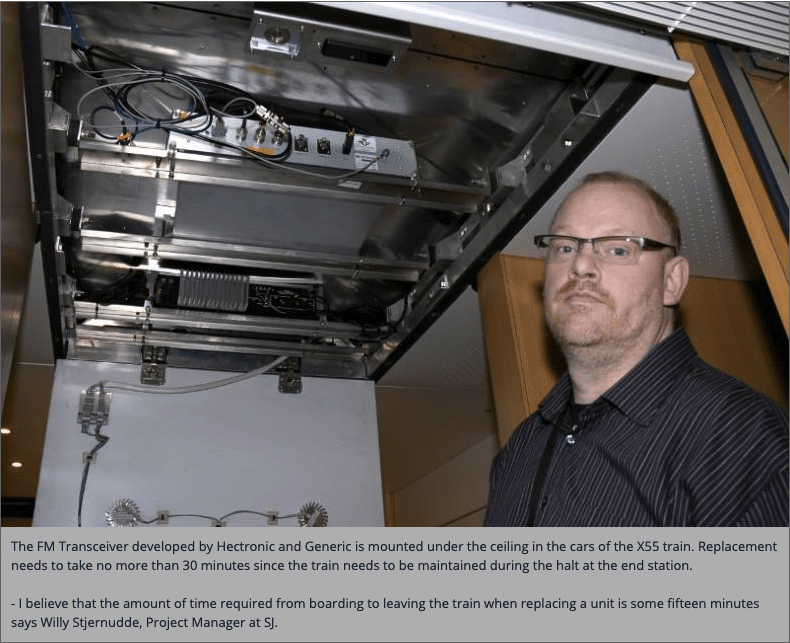
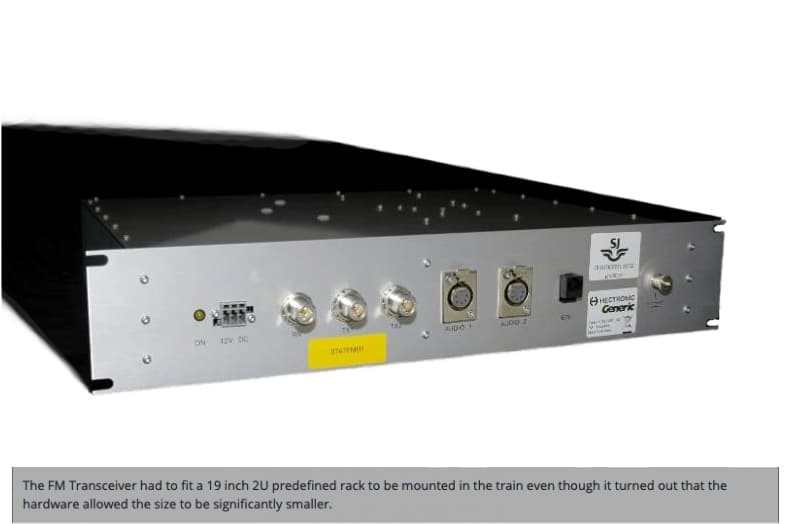
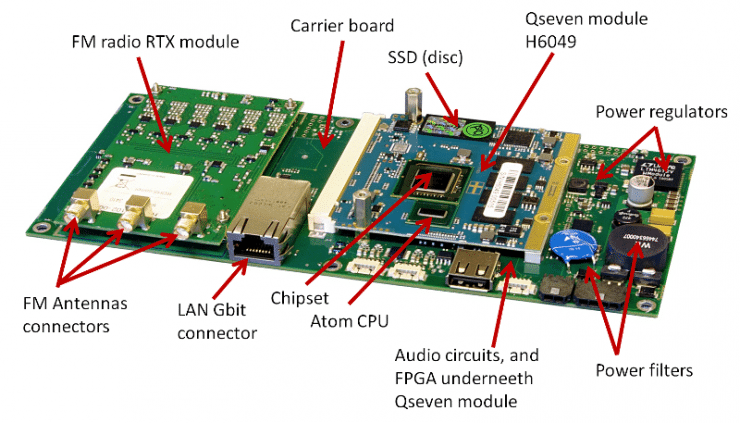
The system hardware is a semi-custom design including a carrier board with audio circuits and an FPGA, an FM Radio RTX Module developed by Generic and the Hectronic H6049 Qseven Module with Intel® Atom™.
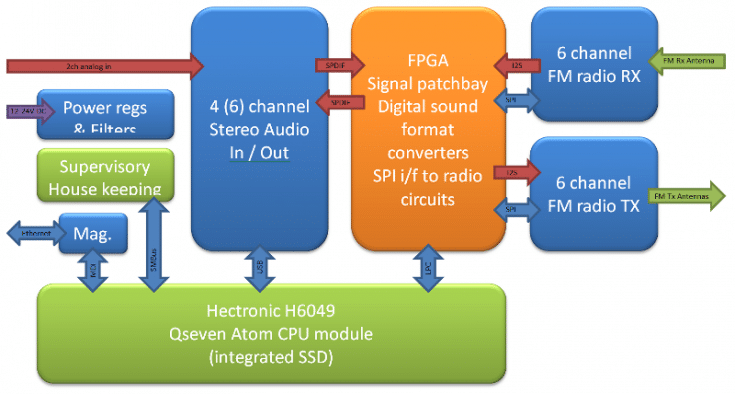
Brief system specification
• Retransmission of 5 FM radio channels
• The 6th FM RX/TX channel monitors RF signal quality
• Streaming of audio over LAN
• Two analogue stereo inputs
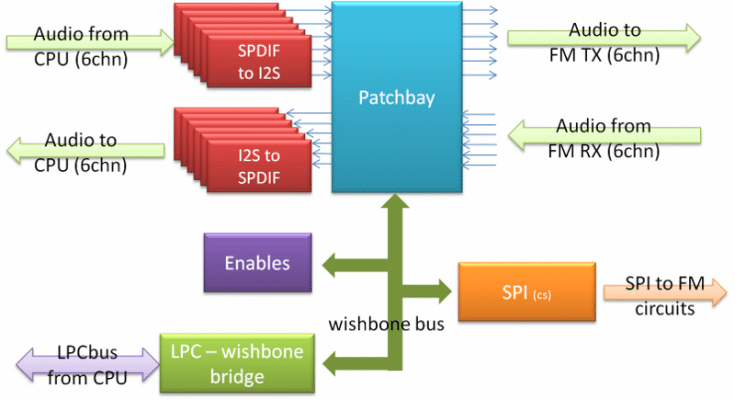
Core functionality realized in FPGA are I2S to SPDIF and SPDIF to I2S converter blocks and a patch bay. The patch bay is configured to connect each output channel independently to any of the input channels.